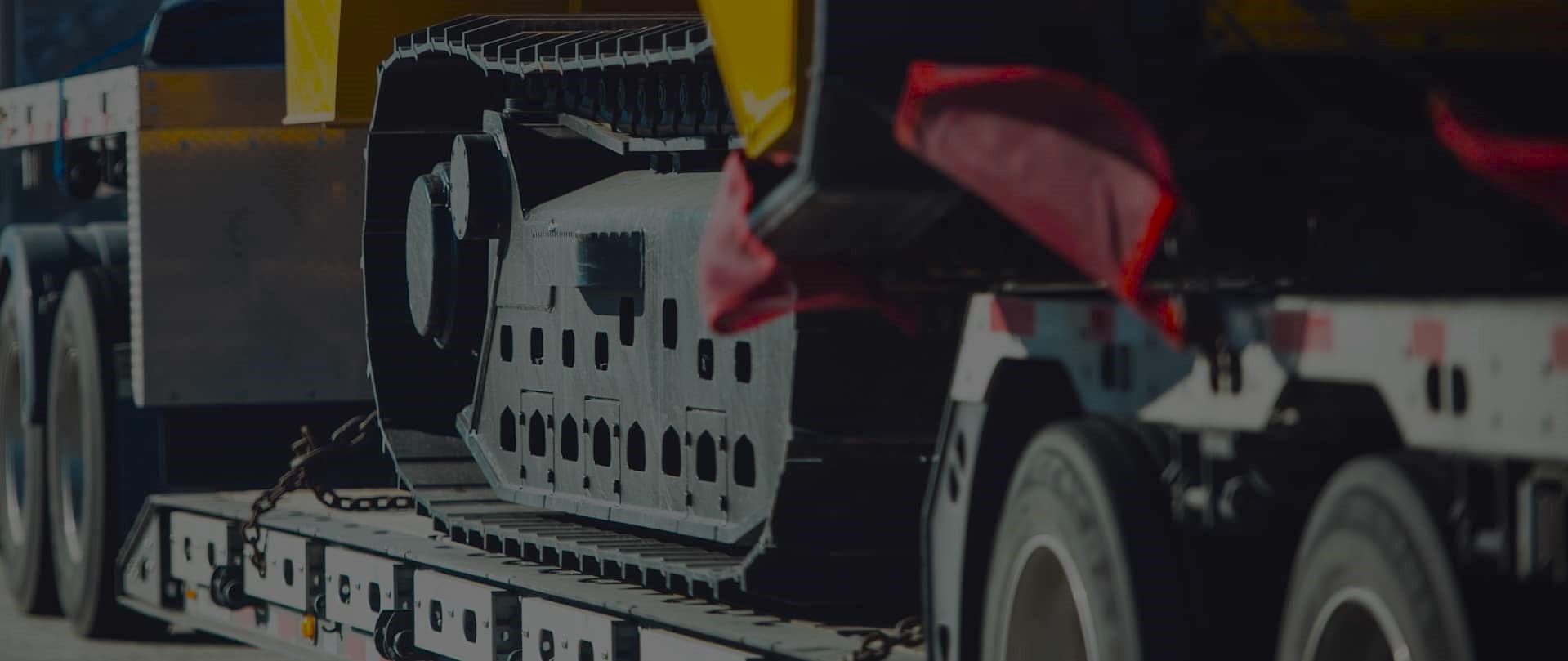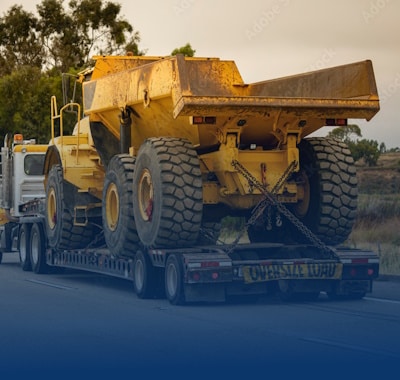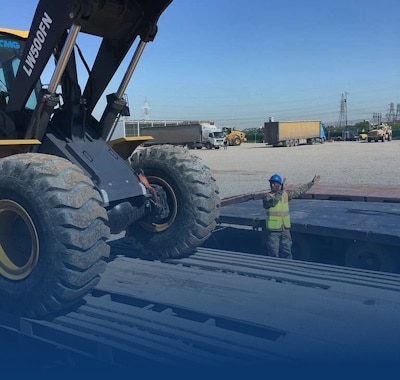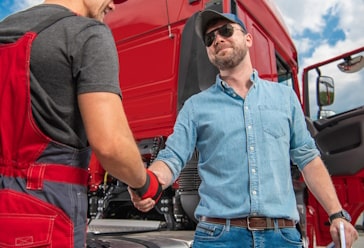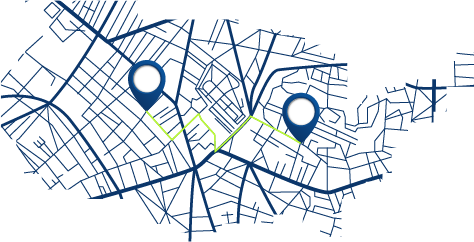Understand Heavy Equipment Hauling Rules for Interstate Moves
Freedom Heavy Haul can offer expedited Pickup and Delivery for any size shipment anywhere in the USA. Contact us today for No Hassle, No Pressure Pricing.
Moving large machinery across state lines is a complex task. These massive loads exceed standard road limits for size and weight. That’s why special permissions are needed.
We know this process can feel overwhelming. That’s why we created this guide. It simplifies the complex world of transporting oversized assets.
Federal and state jurisdictions have specific rules. Non-compliance leads to serious consequences. These include substantial fines and costly project delays.
Our goal is to give you the knowledge for a successful journey. This guide covers permit requirements and safety protocols. We help protect your investment and public safety.
Whether you handle logistics in-house or hire professionals, being informed is key. Knowing the standards ensures smooth operations. It keeps your business running on schedule.
Introduction to Heavy Equipment Hauling and Its Importance
Every transport operation for large-scale industrial gear carries inherent risks and significant responsibilities. We see this process as a critical link in your project’s chain. Its success directly impacts timelines, budgets, and overall operational safety.
This industry operates under constant pressure. Teams must meet aggressive deadlines while adhering to complex rules designed for public protection. Proper cargo securement is the non-negotiable foundation of a safe move.
Industry Challenges and Safety Considerations
An unsecured load is a serious hazard. Loose components can fall, or the entire asset might shift. This can cause catastrophic accidents, endangering drivers and the public.
Safety extends beyond the road. It also protects your substantial investment from costly damage. A single incident can derail a project and harm your company’s standing.
Why Regulatory Compliance Matters
Following the rules, like those from the FMCSA, is about more than avoiding fines. It demonstrates professional responsibility. It shows clients you are a trustworthy partner.
We believe compliance is a strategic advantage. It builds a reputation for reliability and care. This approach safeguards lives, infrastructure, and your business’s future.
| Practice | Positive Outcome | Negative Outcome (If Improper) |
|---|---|---|
| Proper Securement | Asset arrives undamaged; journey is safe and efficient. | N/A |
| Improper Securement | N/A | Potential for asset damage, accidents, fines, and liability. |
| Expert Planning | Regulatory compliance is streamlined; risks are minimized. | N/A |
| Inadequate Planning | N/A | Project delays, unexpected costs, and safety violations. |
Heavy Equipment Hauling Regulations for Interstate Moves
The journey of transporting industrial assets involves coordinating various legal requirements at different jurisdictional levels. We help clients understand this multi-layered system.
Federal and State Guideline Overview
Federal regulations from the Department of Transportation create a foundation for safe transport operations. The Federal Motor Carrier Safety Administration sets cargo securement standards that apply nationwide.
Each state maintains its own Department of Transportation with unique rules. These state-specific requirements can vary significantly in terms of dimensions, weights, and routes.
Common Permit Requirements and Legal Standards
Permit applications typically need detailed documentation about your cargo. This includes exact dimensions, weight distribution, and proposed travel routes.
Legal standards also cover driver qualifications and vehicle maintenance. Proper compliance protects your investment and ensures public safety.
| Aspect | Federal Requirements | State Variations |
|---|---|---|
| Cargo Securement | Nationwide standards for tie-down strength | Additional securement rules may apply |
| Permit Process | Basic framework for interstate commerce | Unique application procedures and fees |
| Vehicle Standards | Minimum safety and maintenance rules | Additional inspection requirements |
| Documentation | Basic record-keeping requirements | Specific forms and submission deadlines |
Navigating Permits: Oversize, Overweight, and Trip Permits
Securing the right permits is a critical step in planning the journey of large assets. It ensures your operation stays within the law.
We help clarify the distinctions between different types of authorizations. This knowledge is vital for a smooth and compliant transport process.
Understanding Oversize and Overweight Permits
An oversize load exceeds standard legal dimensions. Typically, this means a width over 8 feet 6 inches or a height over 13 feet 6 inches. Length limits vary by state.
These special permissions dictate approved routes and travel times. They ensure the load can navigate infrastructure safely.
An overweight permit is needed when the total weight exceeds legal limits. This is often capped at 80,000 pounds. The exact size and weight thresholds differ across jurisdictions.
Some large assets may require additional preparation. This can include detaching booms or shipping tools separately.
| Permit Type | Trigger | Key Consideration |
|---|---|---|
| Oversize | Exceeds standard dimensions (width, height, length) | Route restrictions are common |
| Overweight | Exceeds gross vehicle weight limit | Axle weight distribution is critical |
| Trip Permit | For out-of-state vehicle registration | Temporary authorization for travel |
| Superload | Significantly exceeds standard limits | Often requires engineering approval |
Trip permits serve a different purpose. They grant temporary operating authority to vehicles from other state lines.
Superloads represent the most complex category. They demand specialized routing and extensive advance notice. Planning ahead is essential, as processing times can vary.
These rules protect our roads and bridges. They ensure that large assets are moved safely and responsibly.
Proper Loading, Equipment Securement, and Tie-Down Techniques
Loading and securing procedures represent the critical first line of defense in protecting valuable machinery during transit. We approach each project with systematic methodologies that prioritize safety and compliance.
Selecting the Correct Trailer and Hauler
Choosing the appropriate transport vehicle begins with precise documentation of your cargo’s dimensions and total weight. Accurate measurements prevent clearance issues and ensure proper weight distribution.
We recommend step-deck or lowboy trailers for taller machinery to navigate standard bridge clearances. The right trailer capacity must account for both cargo weight and the vehicle’s own mass.
Best Practices for Equipment Securement
Proper cargo restraint starts with DOT standards requiring minimum four tie-downs rated at 5,000 pounds each. These restraints must withstand significant forces during braking and turning.
We use chain tie-downs for superior strength and reliability. Additional measures like wheel chocks and friction mats provide extra security against shifting during transport.
Escort and Pilot Car Requirements for Safe Transport
Escort vehicles establish vital safety protocols for oversized loads traveling through multiple areas. We consider these support units as essential partners in protecting your valuable assets and public road users.
When Escorts Are Needed
Specific load dimensions trigger the need for escort vehicles. Width exceeding 12 feet typically requires one escort vehicle. Loads over 14 feet wide often need two escorts for maximum safety.
Height is another critical factor. When machinery surpasses 14 feet 6 inches, some jurisdictions require a height pole car. This vehicle travels ahead to verify clearance under bridges and power lines.
Length requirements also determine escort needs. Combinations exceeding 90 to 100 feet often need these safety vehicles. They help manage wide turns and alert other motorists.
Roles and Responsibilities of Escort Vehicles
These specialized vehicles serve multiple protective functions. They warn approaching traffic about wide or slow-moving loads. Their presence helps create essential safety buffers around your transport.
Professional escort drivers maintain constant communication with your transport operator. They provide real-time updates about road conditions and upcoming challenges. This coordination is crucial for navigating tight spaces safely.
State requirements vary significantly for escort certification. Some areas mandate state-certified operators with specialized training. For superloads or urban travel, police escorts may be necessary for traffic control.
We coordinate these safety partners as part of comprehensive planning. They are not just regulatory requirements but essential protective measures for everyone involved.
Insurance, Bonding, and Legal Consequences of Non-Compliance
Financial safeguards are a cornerstone of responsible large-asset transport. We view proper insurance and bonding not as optional extras, but as fundamental components of a secure operation. They provide a critical safety net for your investment and public safety.
Insurance and Bonding Necessities
Before any authorization is granted, proof of adequate coverage is mandatory. This is a non-negotiable step in the process. Authorities need assurance that potential liabilities are covered.
Essential policies include General Liability Insurance. This covers property damage or personal injury resulting from transport activities. It protects your company from devastating financial consequences.
Cargo Insurance specifically protects the value of your asset during its journey. Even with perfect care, unforeseen events can occur. This coverage provides essential financial protection.
Auto Liability Insurance is required for the transport vehicle itself. State minimums often range from $750,000 to $1 million for carriers. Some situations may require a surety bond, particularly for travel across sensitive infrastructure.
| Protection Type | Primary Coverage | Typical Requirement |
|---|---|---|
| General Liability | Property damage and personal injury | Mandatory for permit issuance |
| Cargo Insurance | Value of the transported asset | Highly recommended, often required |
| Auto Liability | Transport vehicle and third parties | State-mandated minimums |
| Surety Bond | Infrastructure damage protection | Situation-dependent, often for sensitive routes |
The legal consequences of ignoring these requirements are severe. Fines can range from hundreds to tens of thousands of dollars. More serious outcomes include asset impoundment, suspension of operating authority, and even criminal charges.
Operating without proper documentation exposes your company to full liability for any accidents, road damage, or infrastructure problems. We emphasize that compliance is always the most cost-effective path.
Expert Tips, Common Myths, and Best Practices in Equipment Transportation
Expert knowledge becomes crucial when distinguishing between transportation myths and proven practices for large-scale moves. We help clients navigate these complexities with confidence.
Debunking Heavy Equipment Hauling Myths
One common misconception suggests a single permit covers an entire journey. The reality requires separate authorizations from each jurisdiction along your route. Even short-distance transports need proper documentation if dimensions exceed standard limits.
Another myth claims permits are instantly available. While standard loads may get quick approval, complex shipments often need weeks of processing time. Planning ahead prevents costly delays.
Proven Strategies for Smooth Interstate Transport
Successful transportation begins with early planning. Allow sufficient time for research and permit applications. Use approved GPS tools that account for bridge clearances and construction zones.
Train your drivers thoroughly in compliance procedures. Double-check all dimensions after loading. Maintain detailed logs for audits. These best practices ensure safe arrival at your destination.
Weather conditions significantly impact travel safety. Many permits restrict movement during severe conditions. Always have contingency plans for unexpected changes.
Closing Thoughts on Compliance and Professional Partnerships
The successful movement of substantial industrial assets hinges on a dual commitment to compliance and professional collaboration. We view this as the cornerstone of reliable machinery transport.
Understanding the complex web of state-level requirements protects your investment and ensures public safety. This knowledge transforms legal obligations into strategic advantages for your business operations.
Many organizations find that partnering with specialized transport experts delivers significant value. These professionals handle permit coordination, route planning, and compliance documentation with precision.
This approach allows you to focus on core business activities while ensuring your machinery arrives safely. Strategic partnerships combined with regulatory awareness create the foundation for successful industrial asset relocation.
